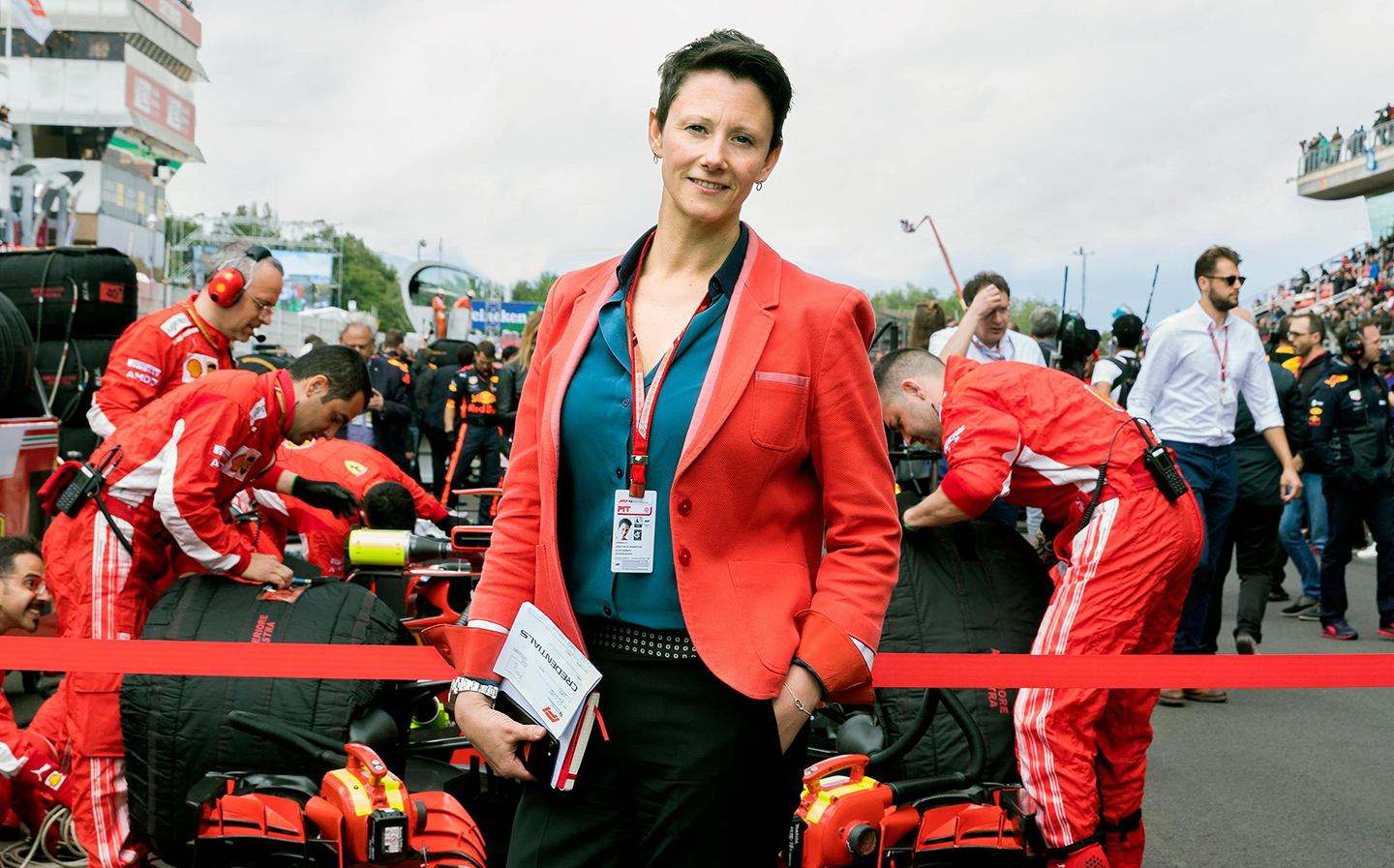I ran the grid girls off the F1 track — interview with Ellie Norman, F1’s first female executive
In a bid to ramp up viewing figures and make the sport more family-friendly, Ellie Norman has sexism in her sights
FORMULA ONE oozes machismo. The roaring engines. The fast cars. And, of course, the infamous “grid girls”. Hang on, though: they were banished earlier this year and now you’d be hard-pressed to find one. Amid the controversy, it was never quite clear who was behind the decision. But now I’m about to meet her.
Her name is Ellie Norman and she is Formula One’s director of marketing and communications, the sport’s high-profile first female executive.
Incredibly, F1’s former owner, Bernie Ecclestone, oversaw virtually every aspect of the sport personally, meaning jobs that most large companies would see as vital were never filled. Now F1 is controlled by Liberty Media, Norman says “it’s like working at a 60-year-old start-up”.
It was at Norman’s first interview for the job, in April last year, that the subject of grid girls first came up. The former Virgin Media executive was invited for coffee with F1’s newly installed managing director of commercial operations, Sean Bratches, an American former vice-president of the sports broadcaster ESPN.
The F1 team wasn’t prepared for the global backlash
“Sean asked me, ‘What do you think of the grid girls?’ And I said, ‘I don’t really know what they do.’ Then he asked, ‘Do you think we need them?’ I replied, ‘Well, it very much does portray a certain view of women. And if we’re going to change the perception of the sport, which means growing and engaging a new fan base, and the world is made up 50/50 men and women . . .’
Sean agreed and said, ‘That’s exactly where I’m at and I think we should move this way.’”
And so the path was laid for the removal, in the words of the Renault driver Nico Hülkenberg, of the sport’s “eye candy”.
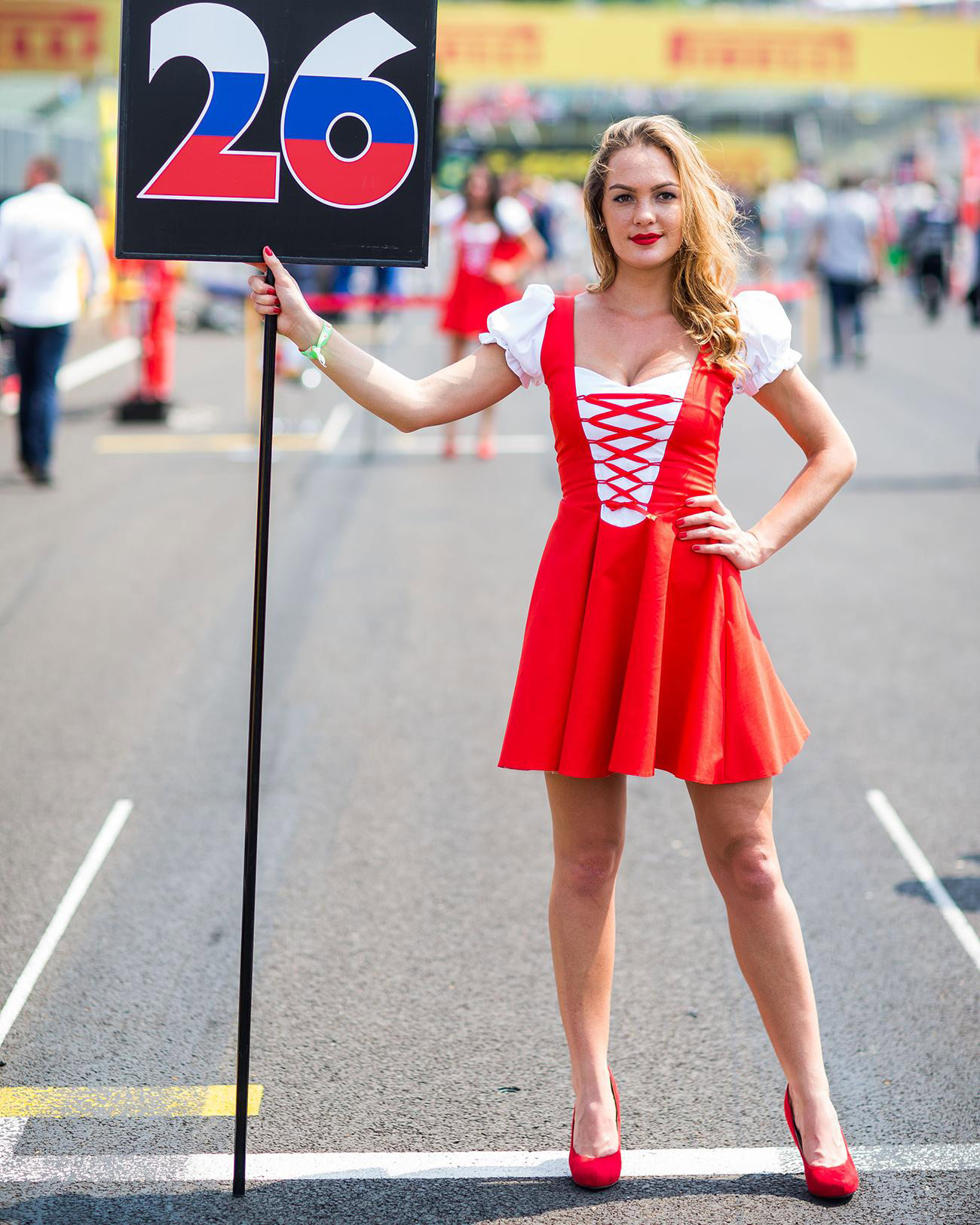
Sign of the times: a grid girl at the Hungarian Grand Prix two years ago
Given the #MeToo juggernaut and the fact that, just before the ban was announced in January, Hollywood actresses at the Golden Globes had taken part in a protest against sexual harassment, the F1 team wasn’t prepared for the global backlash.
And not just from the men (Ferrari driver Sebastian Vettel and Ecclestone, among others). Newspaper commentators, the grid girls themselves and even some feminists objected to the change.
Who was F1 to dictate what women could and couldn’t do with their bodies? Why was it one rule for the privileged fashion world (which can fill catwalks and parties with as many scantily clad models as it wishes) and another for the less rarefied world of glamour models? It became a rights issue, even a class issue.
Yet F1 and Norman — pixie-cropped and softly spoken, but don’t let that fool you — remain unmoved.
“We are clearly not against women,” says Norman, 37. “We’re not dictating as an organisation as to who can and cannot do certain things in their lives. But the reach of Formula One and the role and responsibility that we have — 88m watching in a single race weekend across the globe — that’s far broader than a pocket of middle-class people telling a certain set of people what they can do.
‘If we want to attract families, if we want to attract the new generation and build a female audience, would you have grid girls? No’
“The ultimate decision sat with Sean, but we had some really good conversations about, for example, if we were making this sport today from scratch and launching it, would we have grid girls performing the duties that they had done? And if we want to attract families, if we want to attract the new generation and build a female audience, would you have grid girls? No.”
Bratches credits Norman with implementing the change once in office. “She was a strident, unwavering advocate of banning them, of ‘doing the right thing’, of moving on. It’s 2018 — things change — and if you don’t change, you die,” he says.
Norman adds: “The truth is, if we are going to engage the next generation [of women] in the sport, but . . . all I see [as an aspiring entrant], is being a grid girl . . . is that going to become a barrier to want to work in F1 in other areas? It’s about creating an environment and showing all of the successful women in F1 and all the successful roles that they do play.”
Arguably, that could still have included the grid girls — because why shouldn’t they be considered a success in their own right?
The organisers of the Monaco Grand Prix certainly saw it that way in May, when, in partnership with the sponsor Tag Heuer, they filled the grid with models holding up fan messages. Not strictly “grid girls”, as Norman is at pains to emphasise, because they were not employed under the auspices of F1, but, to the viewing public, essentially the same.
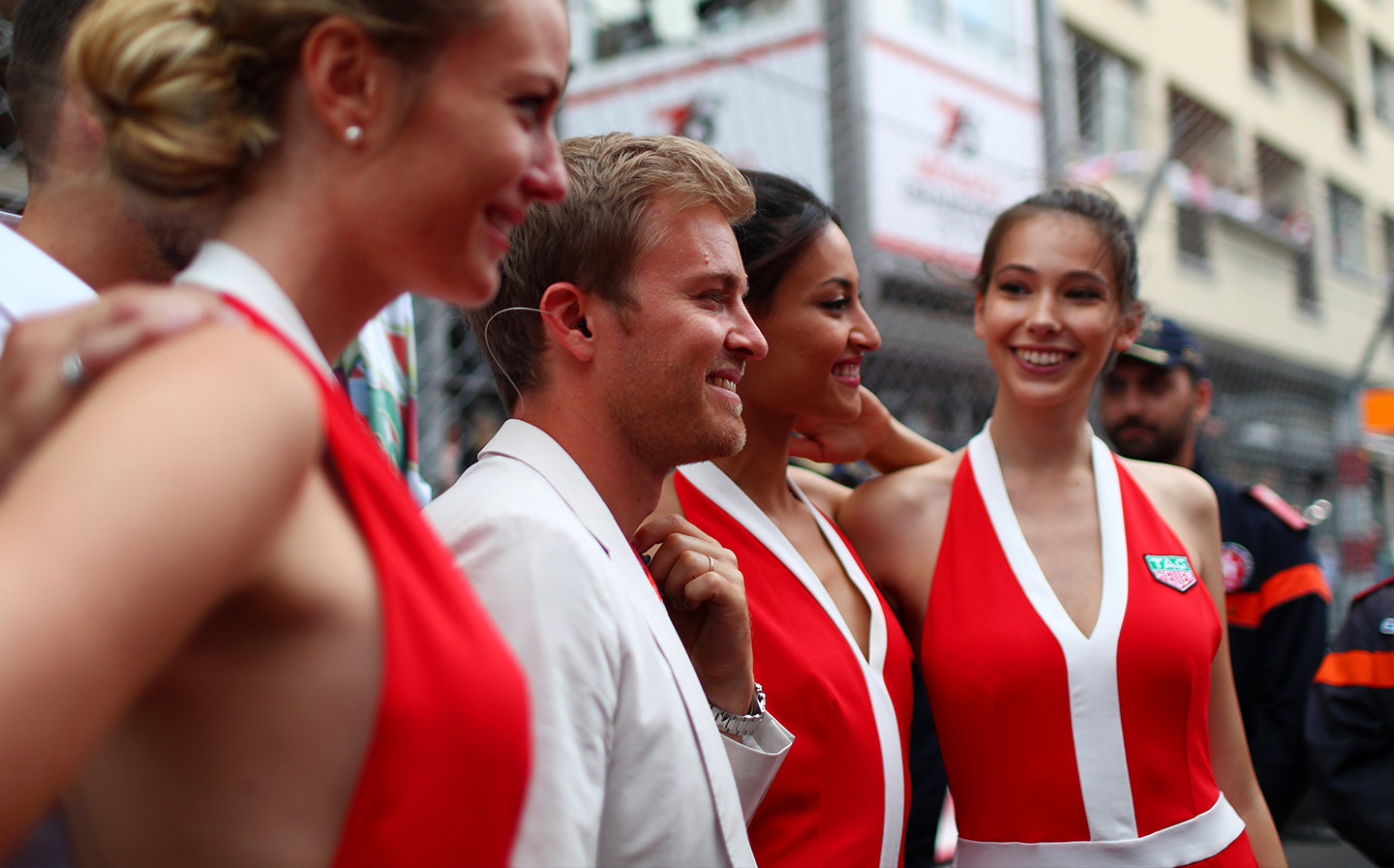
Tag Heuer used grid models — pictured here with former F1 driver Nico Rosberg — to promote its brand at the 2018 Monaco GP
“It’s frustrating because my role is to change the perception of Formula One. In 2018, that doesn’t come from the grid girls. Our position hasn’t changed on that,” she says.
It’s not hard to see where Norman’s unstinting determination comes from. F1, led for decades until last year by the colourful billionaire Ecclestone — he of the three wives, of whom the most recent two were decades younger than himself — wasn’t just an unconscious manifestation of chauvinism and machismo, but an utterly overt one.
In 2004 the broadcaster and former F1 presenter Beverley Turner wrote a prescient exposé of the sport’s ingrained sexism, naming and shaming high-profile men including then Renault boss Flavio Briatore (who dated one supermodel, Naomi Campbell, and fathered a child with another, Heidi Klum), who had propositioned her.
She branded his behaviour “offensive and completely unacceptable from a man who should frankly know better”. She believes the book “was responsible for a noticeable decline in my TV work. It wasn’t fashionable for women on the box to have opinions on such issues.”
Ecclestone claimed that female F1 drivers wouldn’t be ‘taken seriously’ … Sir Stirling Moss questioned whether women had the ‘mental aptitude to race hard, wheel to wheel’
Similarly, when it came to the debate about female F1 drivers, Ecclestone claimed as recently as 2016 that they wouldn’t be “taken seriously”.
In 2013 Sir Stirling Moss questioned whether women had the “mental aptitude to race hard, wheel to wheel”.
Even the former world champion Jenson Button claimed, in 2005, in reference to women’s periods: “One week of the month you wouldn’t want to be on the circuit with them, would you? A girl with big boobs would never be comfortable in the car. And the mechanics couldn’t concentrate. Can you imagine strapping her in?”
You get the impression this is one of the areas Norman finds most exasperating. “Can women race cars as well as men? My view is that cars are designed and engineered to be driven, physiologically, by a male or a female.
“If you look at other sports where men and women compete together, they have an apparatus, whether that is a horse or a boat, and I think if an individual has the right aptitude, hard work ethic and training, physically there shouldn’t be anything to stop a female being as good as a male in a Formula One racing car. There should be no barrier to a female.”
As a 10-year-old growing up in Surrey, Norman dreamt of being the first female F1 driver. “I had a go-kart at the farm we lived on at home. I definitely wasn’t from the sort of background that would have enabled me to have a Formula One career paid for, but I’ve always been encouraged and supported to not have to follow the norm.”
Surely it’s extremely frustrating that, just over 30 years on, the sport is still so male-dominated — is change overdue?
“It might still be a long time away, but the process is starting,” Norman insists. “Change is happening, but it won’t be tomorrow.
“There’s the Formula One test driver Tatiana Calderon, Jamie Chadwick [the first female winner of the British GT championship]. There’s former Williams team test driver Susie Wolff (below), who runs her Dare to be Different programme, Claire Williams, [deputy head of] the Williams racing team . . .”
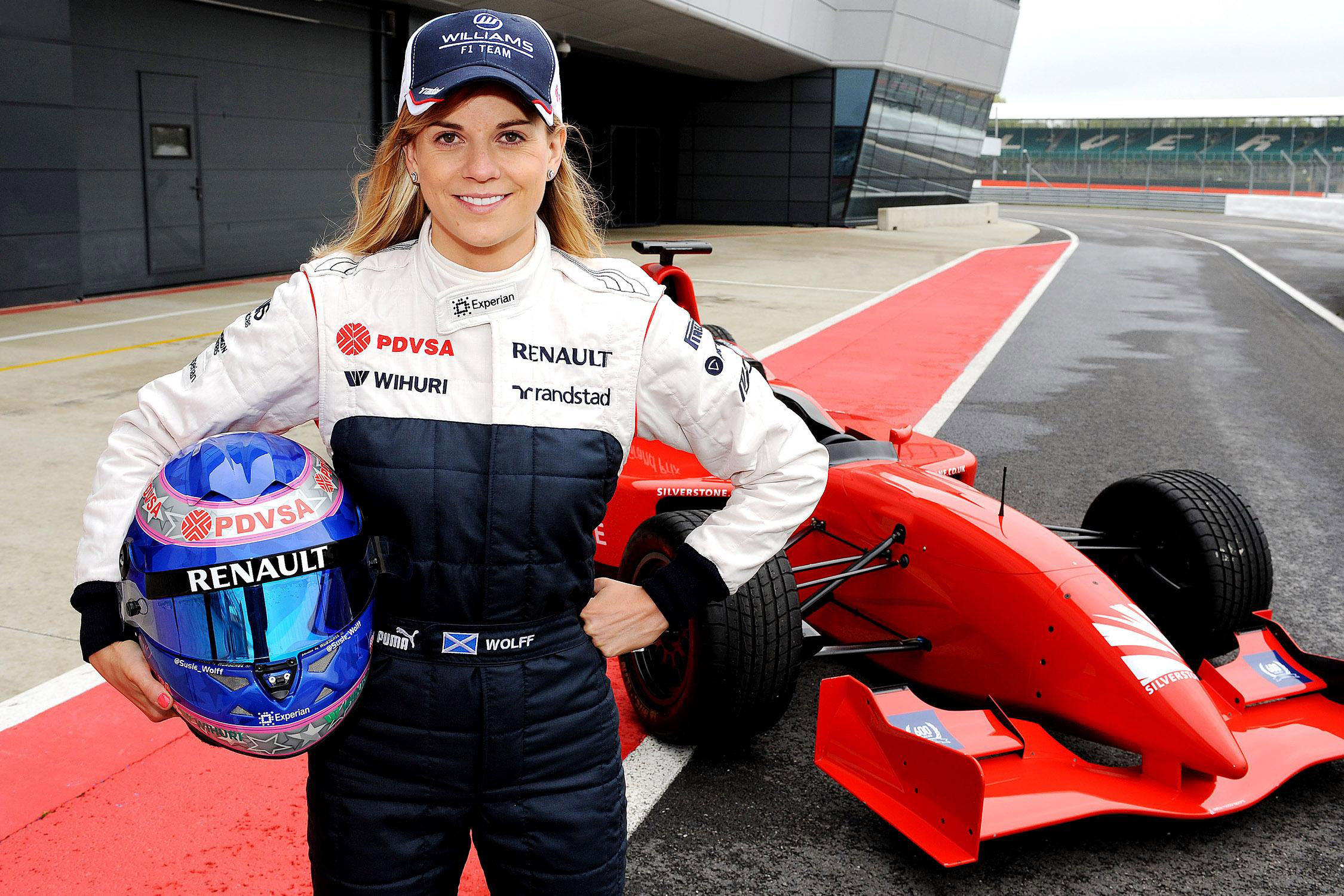
The former Williams F1 test driver-turned-pundit Susie Wolff
Steve Nielsen, F1’s sporting director, insists that a female F1 driver “will happen for sure. There’s no reason why not. We would love it and I’m certain it would also attract new sponsors.”
However, he goes on to reveal at least some of the perceived prejudice that has dogged the sport for decades:
“Twenty or 30 years ago, before the introduction of power steering in the cars, it may well have been physically prohibitive. It’s the same reason you now see more women driving HGVs.”
Norman refuses to be drawn on whether she herself has faced any sexism since beginning her role, but concedes: “There are massive hurdles within Formula One.”
The urgency for F1 to modernise is as much a survival tactic as anything else. Last year it was reported that F1 viewing figures in the UK had fallen to a 12-year low of 21.8m — despite the fact that a record number of races had been held the previous season, with a to-the-wire championship finish.
In 2016 F1 racing moved from the BBC to a shared Channel 4 and Sky package, with their much smaller audiences. (It is set to move in full to Sky in 2019.) The drop in British viewing figures coincided with the sixth year-on-year decline in global viewers.
“There shouldn’t be anything to stop a female being as good as a male in a Formula One racing car”
The sport has faced criticism for being “too boring” as a result of strict safety rules and the dominance of the richest three teams. Norman accepts that “the perception is it’s becoming boring and processional” and it needs to become “a more fair playing field”.
“For example, up until Baku [the Azerbaijan Grand Prix] in April, where we had [Sergio] Perez from Force India finish third, only once in the last three or four years had a team outside of the top three been on the podium. Whereas if you look at the Premier League, actually there is always a much greater chance that the bottom six teams could beat the top six.”
The man with the task of changing that is Ross Brawn, F1’s new managing director of motor sports and possibly one of the most qualified men in the business, having won championships for Ferrari and Benetton as a technical director.
Norman says: “We’re going to put some parameters in place, look at what the fans want — noisier cars, more exciting racing.”
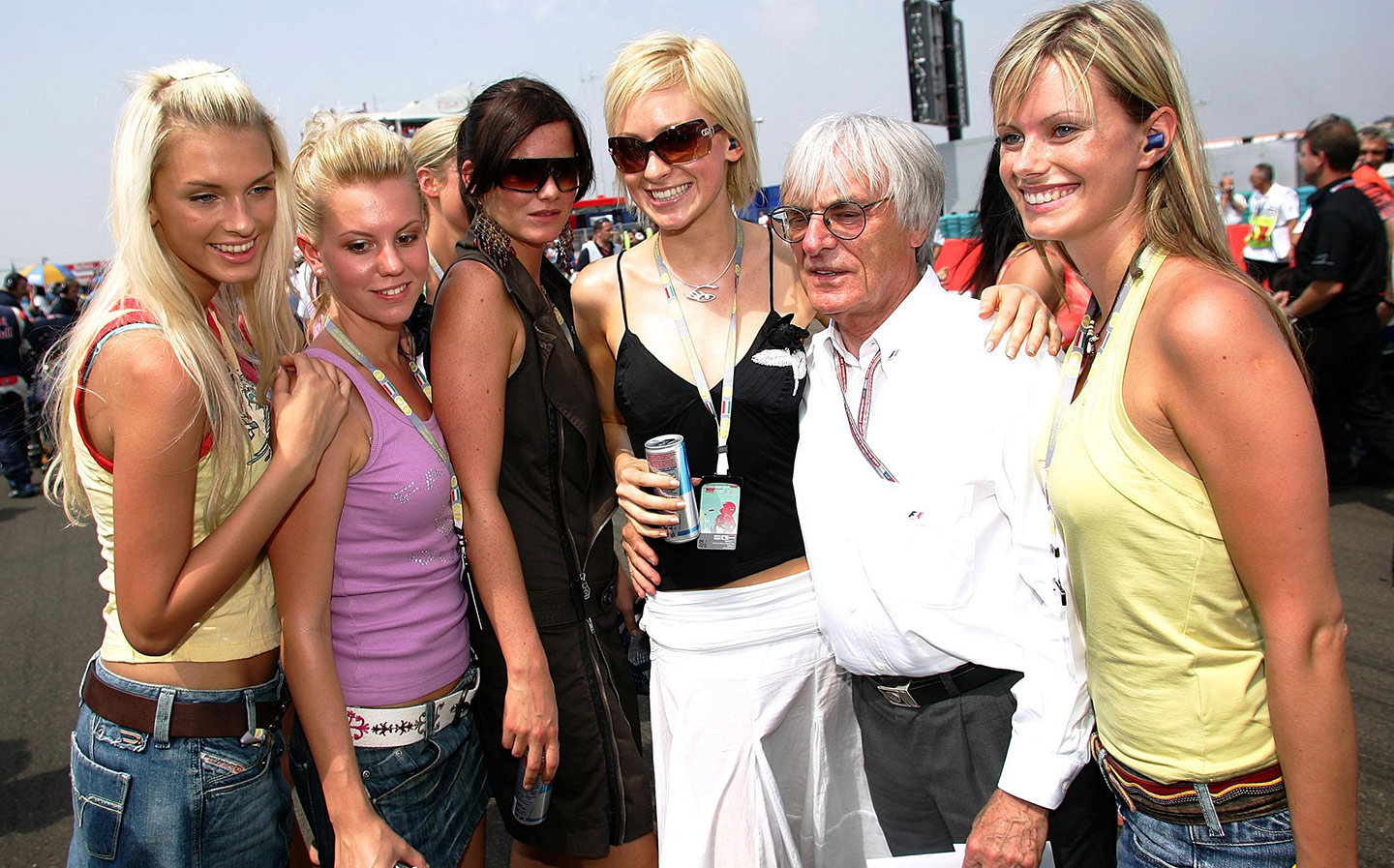
Change of driver: Bernie Ecclestone and friends during the 2005 season
Is there a place for such blatant gas-guzzling in the modern world?
“To me, the most interesting aspect of F1 is the perception that it is very environmentally unfriendly,” Norman counters. “Yes, the cars are seriously bloody fast. But it’s a 1.6-litre engine — smaller than many on-the-road cars.
“It’s hybrid, obviously, and it’s producing near-on 1,000bhp. The engineering excellence and the innovation that has gone into producing an engine that is that efficient is phenomenal.
“The reality is that technology from F1 cars works its way into road cars. So if we look at the proliferation of hybrid engines — that technology was first tested in F1. F1 cars were also the first to really look at carbon fibre as a composite.”
Women, she says, will be increasingly involved in designing the cars of the future.
‘Getting women into motor sport needs to start way back in school, when the kids are karting at five, six or seven years old. It’s creating the opportunities and desire at that age’
“F1 has this incredible [technical education] challenge called F1 in Schools, and I went to Malaysia last October for the world final and it was out of this world. There are over a million kids participating and it made me cry, because there was way more balance of females than I thought there would be getting involved.
“It’s the full package, where they are designing, looking at air flow, aerodynamics and performance, then building [cars], racing them and then having to go market it and get sponsorship.
“One all-female team that really stood out to me had come all the way from the Middle East with their teacher. They lived pretty much in a war-torn environment, had never left their country until this moment and they’re in Malaysia competing with 50 other countries, as four women at 17 years old. They were really holding their own.”
So would Norman support a female quota for the racing teams?
“What I am supportive of is creating the opportunities to get there, but not to set a quota at the top . . . It needs to start way back in school, when the kids are karting at five, six or seven years old. It’s creating the opportunities and desire at that age. Because if you’re good, people shine through.”
Does that mean we will see the first female F1 driver starting on the grid during Norman’s tenure at the organisation?
“My tenure?” she laughs. “No. But in my lifetime, yes. But it’s 100% vital to have the men behind us. Without the support of men, it would be a really hard journey.”
If anyone can marshal them, Norman can.
This article was first published in The Sunday Times Magazine
Tweet to @tashpearlman Follow @tashpearlman
Me and my Motor: Susie Wolff, the racing driver on getting within a whisker of an F1 race seat


